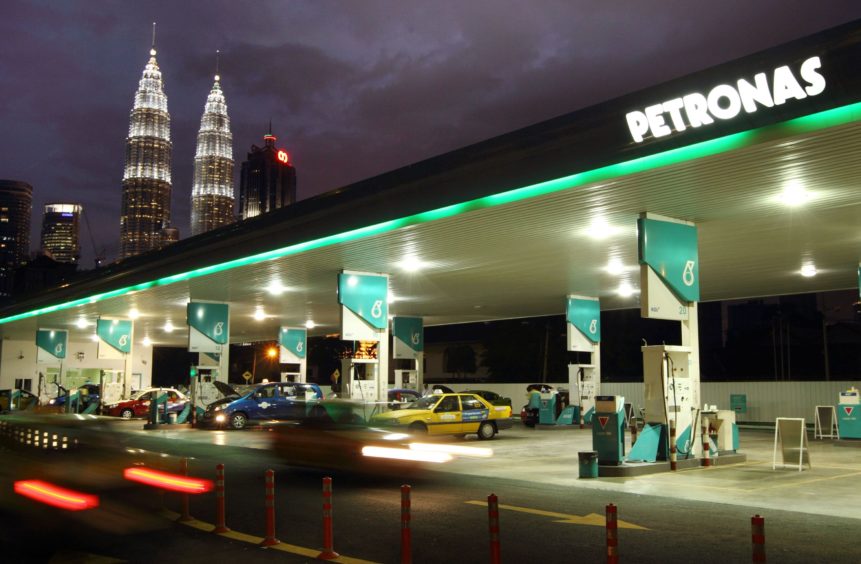
The Petronas-operated Bintulu LNG export complex, in the eastern Malaysian state of Sarawak, desperately needs new gas supplies to maintain its exports in the near-to-medium term, as legacy fields mature.
Moreover, recent news that the fast-track schedule for PTTEP’s giant Lang Lebah field development appears to be slipping, does not bode well for the 29.3 million tonne per year LNG export facility, which is one of the world’s largest.
Thai upstream player PTTEP said on 5 November that it only expects to take a final investment decision (FID) for its proposed giant sour gas field in 2022. Initially, FID was targeted by 2021, after the field was discovered in 2019. Further slippage is possible.
Estimated at around 57 billion cubic metres, Lang Lebah in Block SK410B, is PTTEP’s biggest-ever discovery. The Thai company and its joint venture partners, Kuwait Foreign Petroleum Exploration Co. and Petronas, are now drilling an appraisal well to confirm suspicions that the find is even bigger than initially estimated.
Crucially, Malaysia needs to unlock sour gas fields to help maintain LNG exports, as many of the country’s easiest-to-exploit sweet gas fields have already been commercialised. Significant multi-trillion cubic feet discoveries continue to be made off Sarawak over the past decade, including Kasawari, B14, Rosmari-Marjoram, as well as Lang Lebah. But their commercialisation has been complicated by the presence of acid gas contaminants.
Sweet gas is preferable for developers as it does not contain so many impurities. Sour gas, on the other hand, is difficult and costly to develop.
Indeed, the future of the Malaysian LNG export facility lies in the development of large, acid gas fields, or smaller sweet gas fields, which are likely to be insufficient on their own to provide backfill, according to consultancy IHS Markit.
Technical challenges posed by high levels of impurities have thwarted development plans for some high-profile discoveries in the past. Therefore, any new sources of cleaner gas stand a good chance of leap-frogging the development queue of existing resources. Positively, the gas at Lang Lebah looks relatively clean, with few contaminants. Assuming the gas quality is good, the Thai company should still be able to fast-track its development – which lies close to existing infrastructure – as feedgas for Bintulu.
Development of high carbon dioxide gas fields is not a new challenge for Malaysian national oil company Petronas is this region. Some acid gas fields, such as B11, are blended with sweet gas to meet entry specification for some of the LNG processing trains at the nine-train Bintulu complex. The ninth processing train, which started up in 2017, is even equipped to handle gas with up to 20% carbon dioxide content.
But big challenges remain, warns IHS Markit analyst David Ooi. As the existing sweet gas fields increasingly reach production maturity, the availability of blending stock is likely to be limited. Ooi said this would limit supply options for feedgas into trains one to eight. Additionally, Petronas’ public commitments to carbon capture, utilisation and storage, will require costly solutions for compliant acid gas removal and disposal.
“There is a pressing need to upgrade and expand the existing acid gas removal facilities to process gas with higher levels of carbon dioxide and hydrogen sulfide. Such investments could unlock over 10 trillion cubic feet of gas resources, that can serve as feedstock gas,” said Ooi.
However, “considering the downturn in oil prices precipitated by the COVID-19 pandemic, there is a fear that the necessary investments are not made, as companies seek to conserve cash and reprioritize capital expenditure,” he added.
Malaysian engineering companies are eager to work on and get experience from the sour gas projects, particularly as interest in carbon capture, utilisation and storage rises in Southeast Asia.
The rising trend towards sour gas development in Malaysia, combined with rising concern about the global climate crisis, means it is crucial that Southeast Asia develops technical competence in carbon capture and storage technologies.
Setting aside the challenges with feedstock availability, Petronas is also facing increasing above-ground pressures as the regional state of Sarawak pushes for more autonomy and control of the gas resources.
The Sarawak government has announced plans to transform Bintulu from an LNG producer to a petrochemical hub. The state is keen to create a higher value downstream industry to stimulate the local economy.
The local government has also introduced a sales tax on upstream production, which is likely to erode the project economics of future gas developments, said Ooi.
“Whether the state government will succeed in its petrochemical ambitions remains uncertain. What is clear though, is that as potential sources of low-cost gas dries up, the next slate of gas feedstock supply, whether supplying a petrochemical hub or the MLNG complex are likely to be developed at higher upstream breakeven price points and consequently cost more for gas purchasers,” he added.